What to read about Java right now?
Java has appeared in the already distant in the 1990s and in less than 5 years has become one of the three most popular languages on the planet. Today, thanks to the development of the mobile world, Java continues to be a modern and incredibly sought-after representative of the IT world.
But popularity, along with age, has the reverse side of the medal - during these 23 years a huge amount of literature has been published. Some books have become a real classic, so teachers are guided by them in training courses even today in 2018. However, this does not mean that in recent years no good books have been published. In confirmation of this, Ilya Bubnov , the author of GeekBrains, has studied online stores to find a dozen of top-rated books on Java published or reprinted in Russian over the past year.
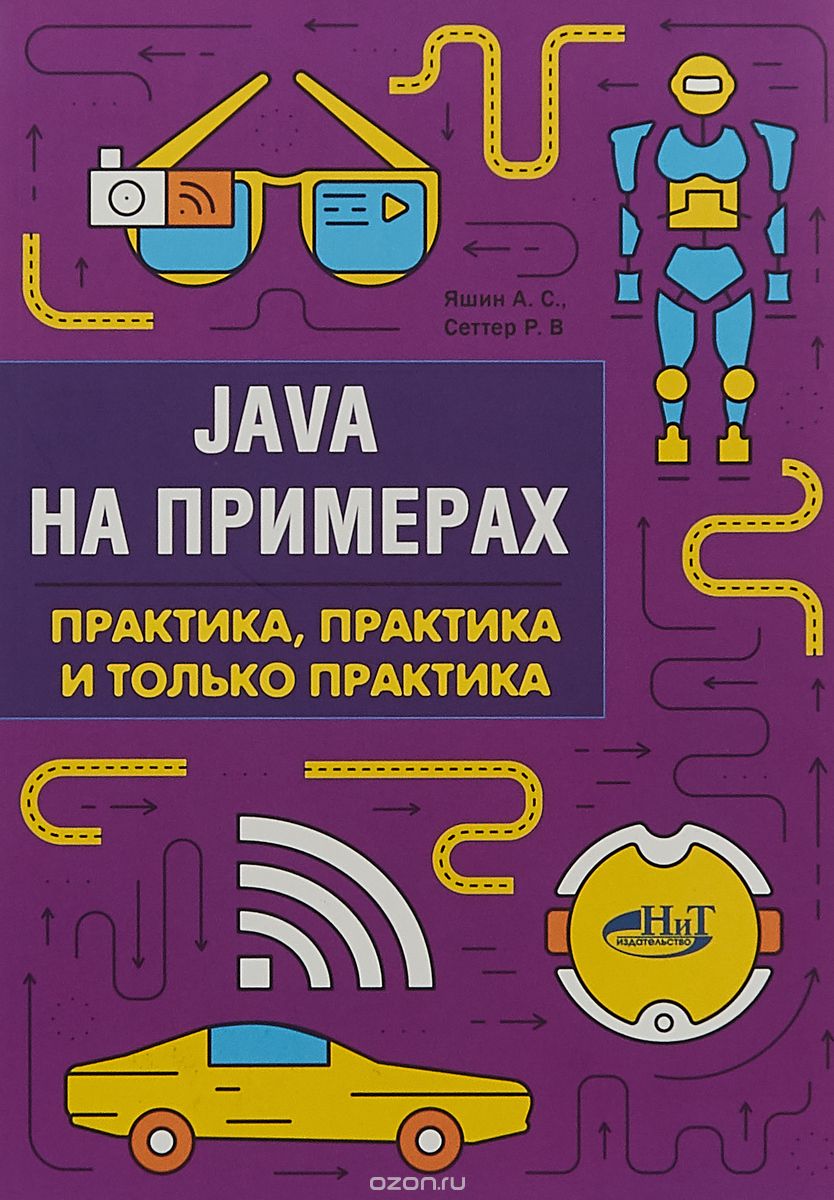
We begin with books filled with examples with comments, because they contain a special value when studying the current version of Java. “Java with examples” is a refinement of a similar 2016 Setter book. That copy was distinguished by abstract tasks submitted without a context and with a superficial approach, which was useless without the use of additional literature.
This book has taken a step forward in terms of quality: the code is valid for real use, information is fed in the correct dosage, and for understanding the tasks, the beginner has enough official Java documentation.
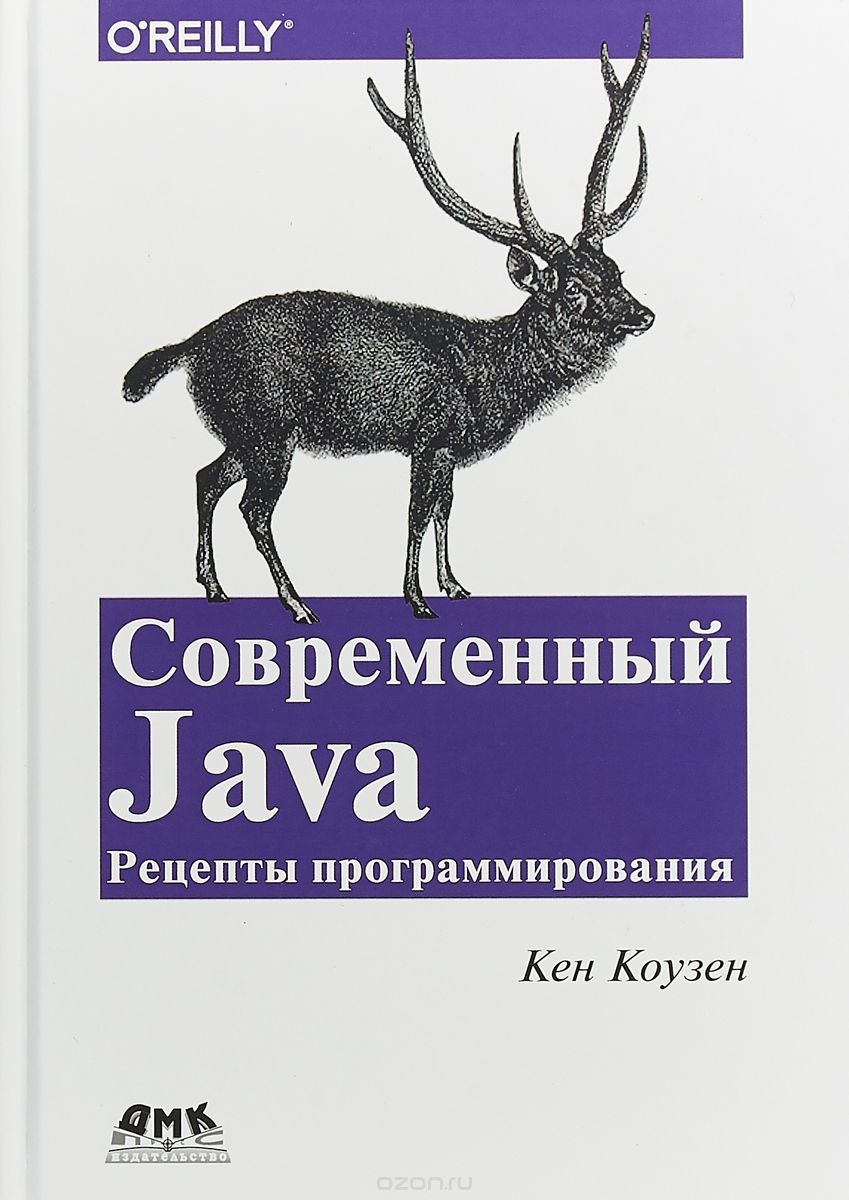
In his book, Kouzen examines approaches to solving more than 70 classical problems. Most of them are focused on Java SE8, since it was this version that made a mini-revolution in the language, but there is also an addition from the ninth version.
This book will be useful to read to those who are already studying for courses or even have a couple of years of experience. That is, there is almost no basic theory here, but a lot of attention is paid to the
capabilities of the updated Java: lambda expressions, functional interfaces, predicates, and much more.
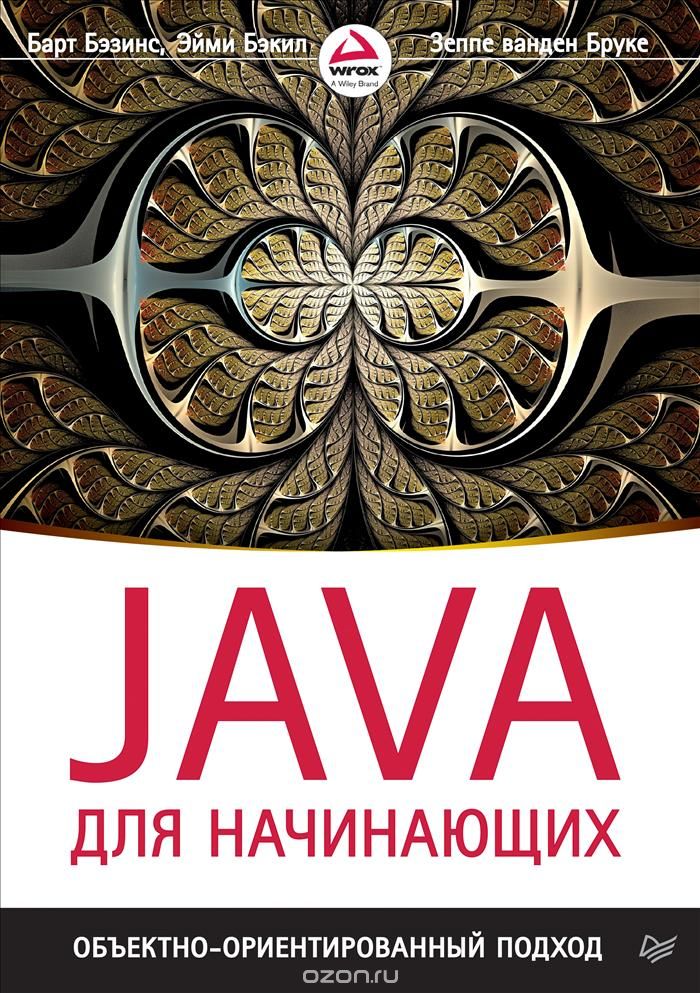
The book is written by professional teachers in Java, so from the point of view of the presentation of the material there is nothing to complain about. First, you will get acquainted with the development environment, then go to the basics of OOP and language. Everything is accompanied by code examples and figurative comparisons, you will not have problems understanding the theory.
Another plus is that the book does not end with the basic features of Java, but touches on some aspects of advanced programming. For this end, there is even a special section with scenarios in which the studied material can be applied. The only thing that may not like in “Java for beginners” is the frequent repetition of the fundamental concepts of the language. For a newbie, this is more of a plus, but if Java is just another language for you, it becomes hard to read.
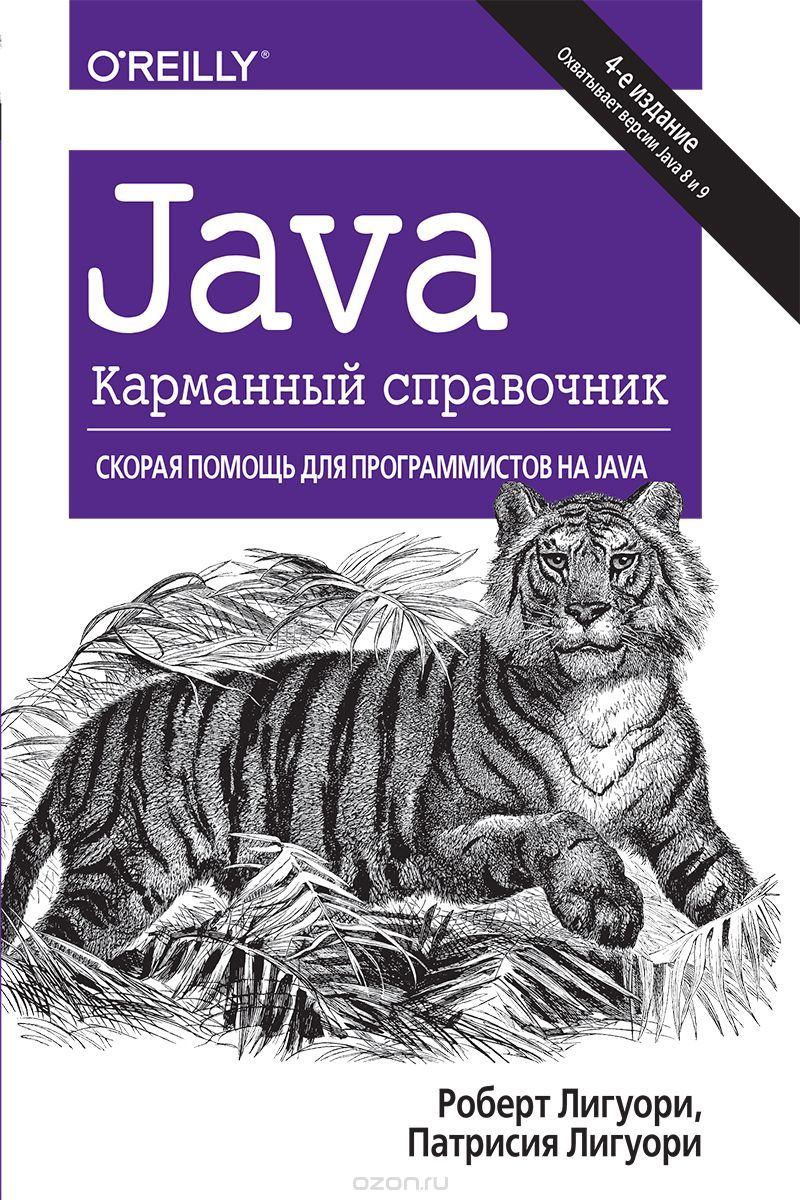
The fourth edition of the popular O'Reilly reference book series, updated to the Java 9 version. As in other books, here you will find a duplication of the official document, but with a lively language and a better structure. Naturally, learning from such a book is hard enough, but it will be very useful to buy and put it on the desktop.
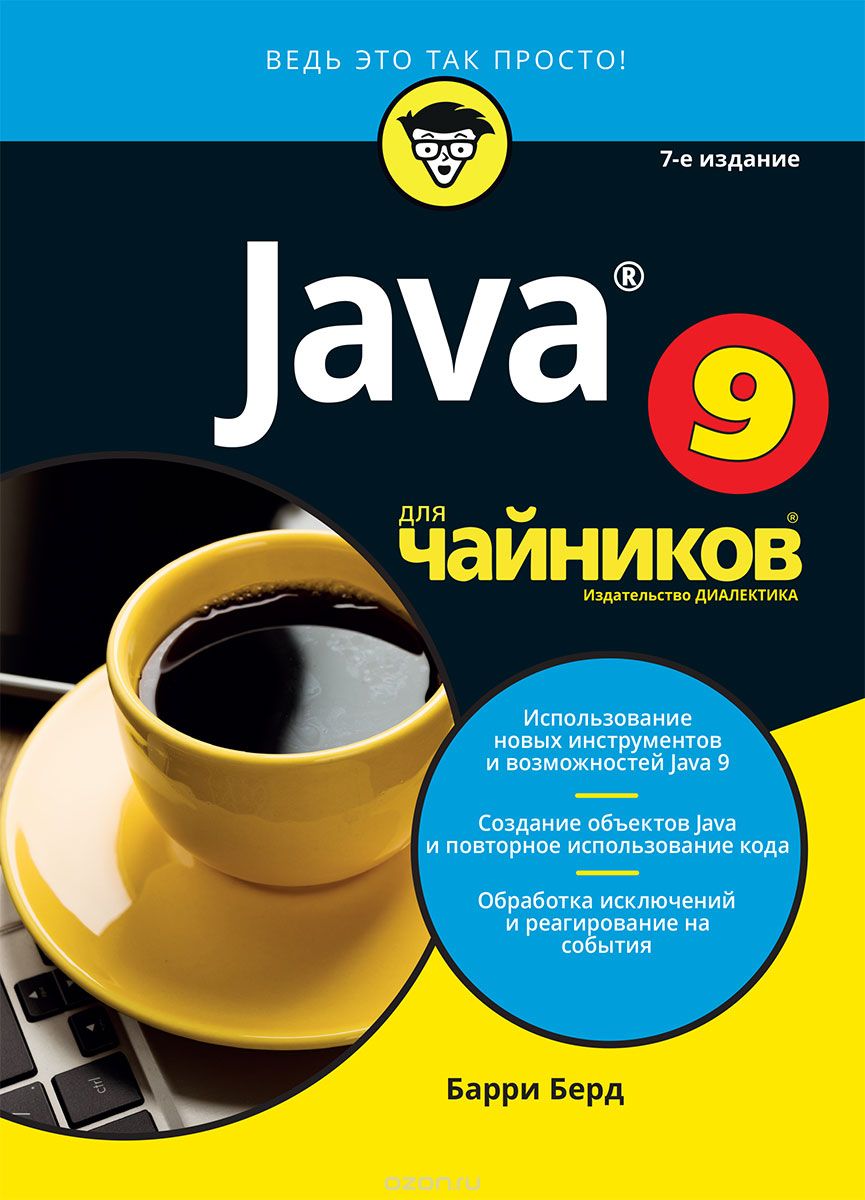
Another classic book series. As befits a series, there is a lot of practical, step by step theory that will allow a person, even far from programming, to understand and penetrate Java. This is not a practical textbook or reference book; This is a book that can be read once and see if you want to move on. It has been updated to Java 9 and reissued in 2018. But for a long explanation of OOP and basic programs, the version does not matter.

The name of the book clearly shows the target audience. This book is not suitable for beginners, those who have little knowledge of programming in general and Java in particular. However, those who studied Java many years ago and now needed a paper book where the terms of the ninth version changes are described are useful literature. Adaptation of the book was painless, so for people who have been friends with Java for a long time, it will be useful to buy a “Complete Review of Innovations” and put it on the nearest bookshelf.

Kay Horstmann is the author of several famous books on Java. Specifically, this will be interesting not so much by theory, although it suffices here, as by the method of submission and subsequent practice. Information is given in small portions and immediately fixed in the exercises. From the point of view of digestibility, this approach is useful to most people, but as a reference book, this book has a clear disadvantage - the standard topic can be stretched over several pages.
Java SE by Horstmann is perhaps one of the most popular educational books on the language. Therefore, if the information in the previous books you found too compressed, difficult to understand, then here you will not feel this for sure.
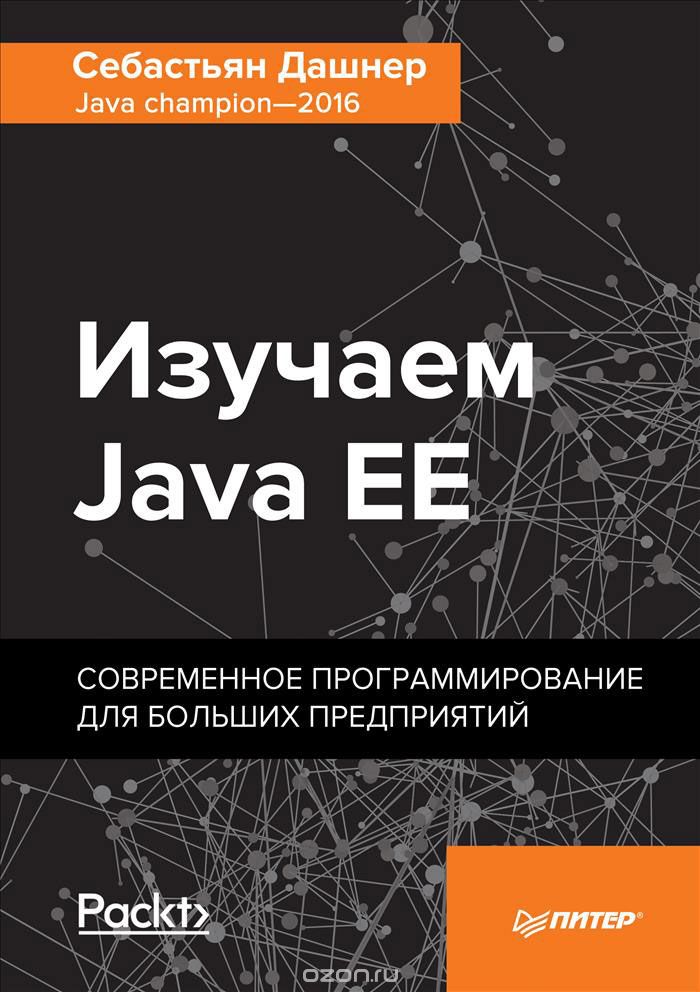
The profile book, which only gives it value, Sebastian Dashner, in 2016 awarded the title of Java-champion (this is very cool, if that). This is not a book for learning the language; rather, it is suitable for those who are going to move from the application level to the creation of corporate applications. There is everything you need: the general principles of creating such products, the organization of work on the principle of DevOps, the fundamental basis for creating tests.
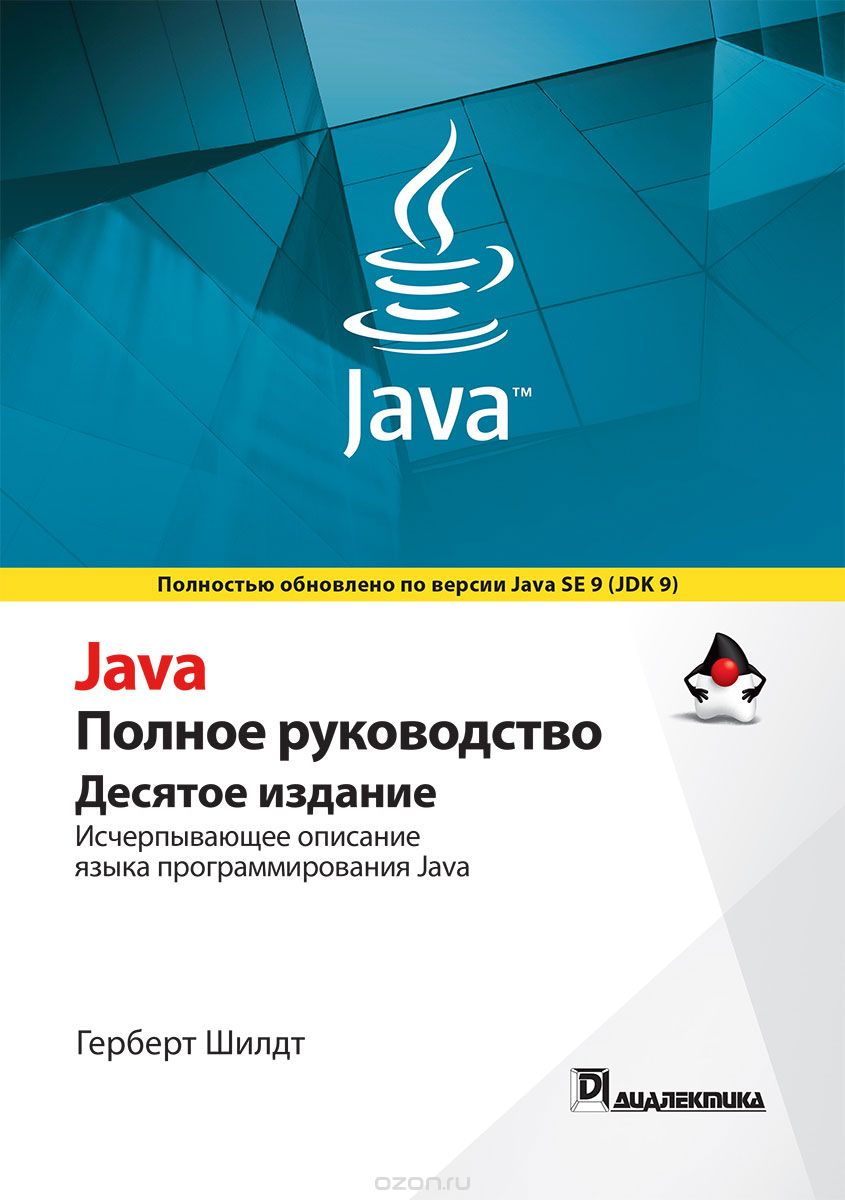
Herbert Shildt is the author of many books, not only in Java, but also in other languages. This work is the same classic, and it was updated for the tenth time already to the Java 9 version. On nearly 1,500 pages, you have to go from learning the principles of OOP to JavaBeans components. There are a lot of theory and examples with comments, in general, everything that a newcomer wants to see in, perhaps, the only paper book on programming.
In world practice, Schildt’s book is also a universally recognized must-read, one of the top on Amazon and featured in almost all the rankings of the best publications on Java. The publication in Russian did not spoil the original, which means it is strongly recommended for reading.
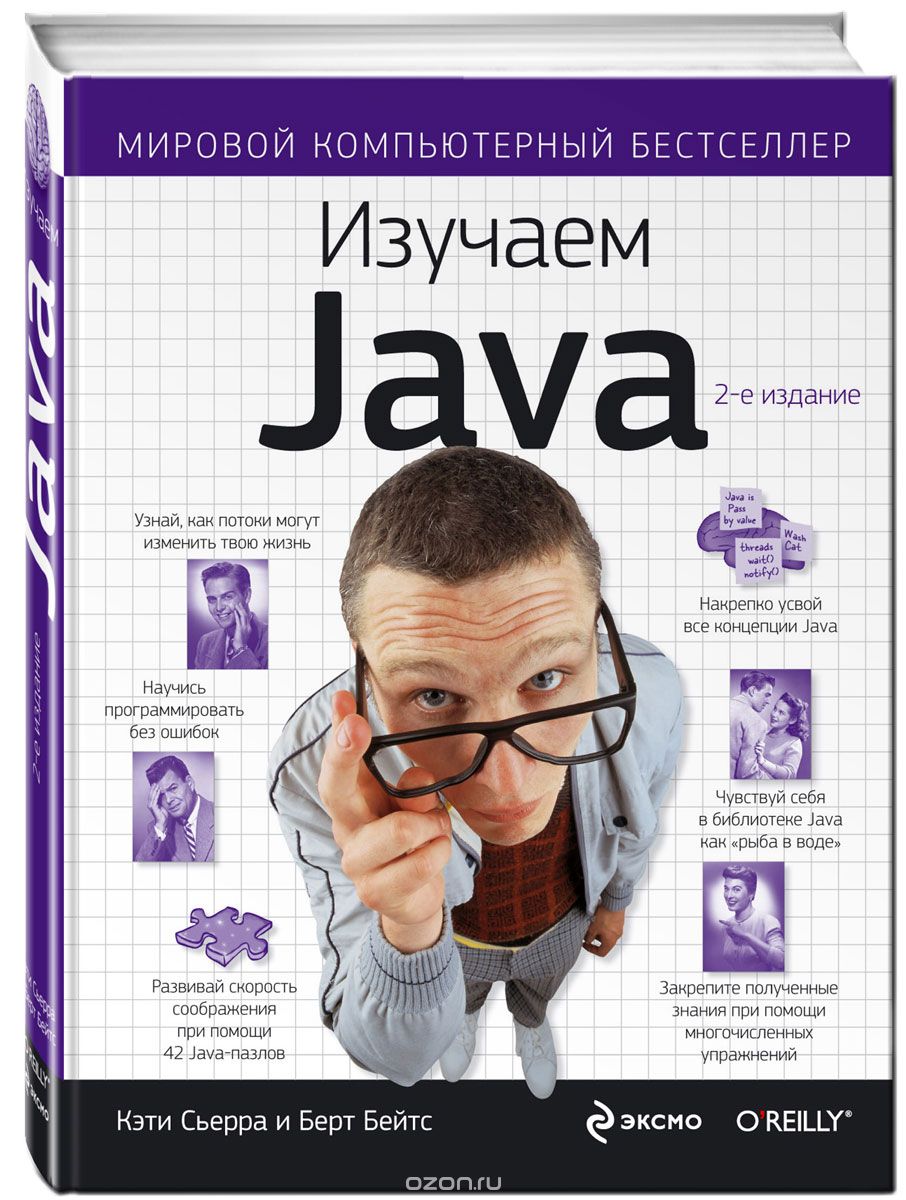
The book of the popular Head First series is a definite mark of quality for those who want to quickly grasp an unfamiliar topic. There is everything to a beginner to get acquainted with the language: humor, illustrations, exercises, examples with comments. In this case, you do not even need to know the basics of programming, everything is described in detail here.
If we talk about the shortcomings, then this, of course, the weak relevance of the book. The English version was published already 13 years ago, that is, it is incredibly far from modern Java features. For a start, it will do, but it’s better to keep other books as a desktop reference book.
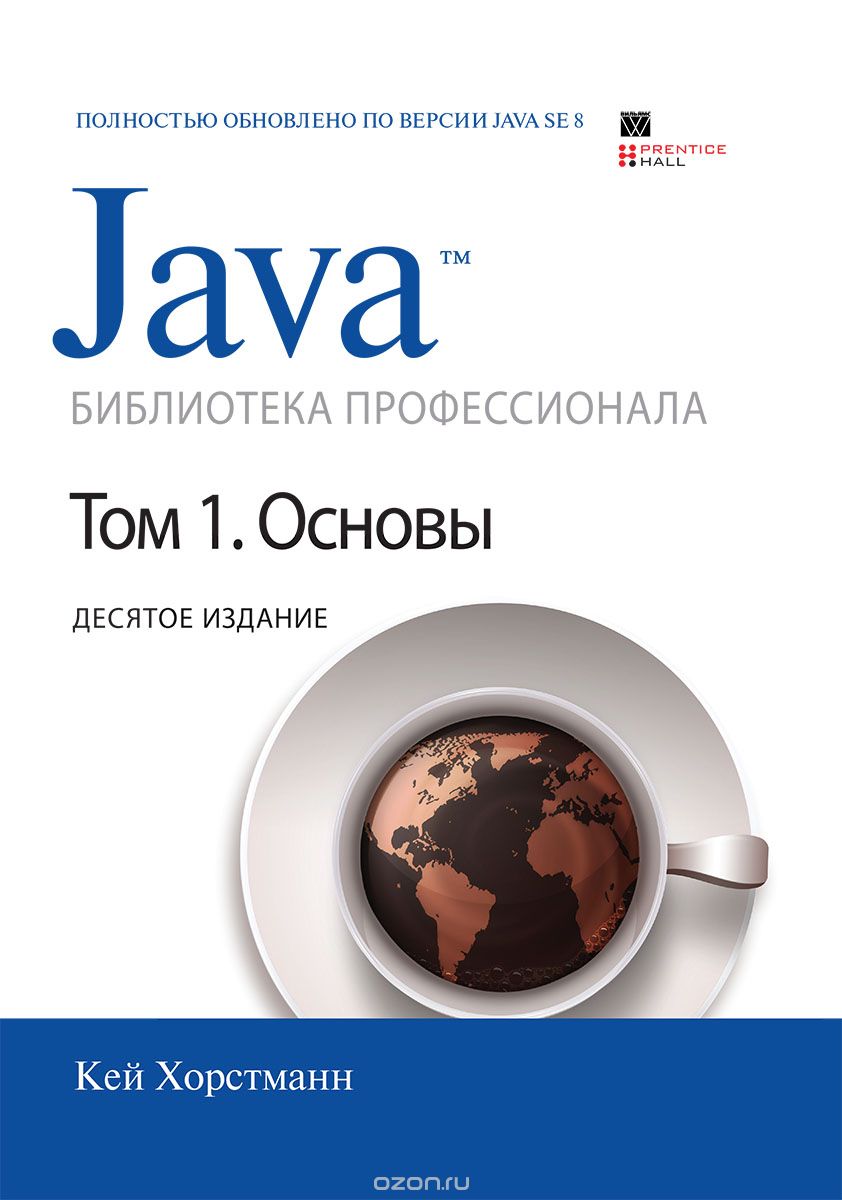
We finish the ranking with one important example of why a programmer needs to know English and use original literature. “Java. The Library of the Professional ”is another great book by Horstmann that has long become a classic. It consists of two volumes of "Basics" and "Advanced Software", each under 1000 pages, so you will not complain about the lack of information. This is the 10th edition in a row, in Russia it appeared at the end of 2017. It is dedicated to Java SE 8, although version 9 is now relevant, but this is not the worst. Unfortunately, as is often the case, the adaptation did not go unnoticed - translation and savings on the press greatly lowered the degree of steepness of work of S. S. Horstmann. You will have to face such savagery as, for example, the translation of the abbreviation IDE (here it is ISR). In learning the language it does not hurt you,
In connection with the last example, an important question arose: which books do you recommend NOT to buy because of the adaptation curve?
But popularity, along with age, has the reverse side of the medal - during these 23 years a huge amount of literature has been published. Some books have become a real classic, so teachers are guided by them in training courses even today in 2018. However, this does not mean that in recent years no good books have been published. In confirmation of this, Ilya Bubnov , the author of GeekBrains, has studied online stores to find a dozen of top-rated books on Java published or reprinted in Russian over the past year.

Java on examples. Practice, practice and practice only
We begin with books filled with examples with comments, because they contain a special value when studying the current version of Java. “Java with examples” is a refinement of a similar 2016 Setter book. That copy was distinguished by abstract tasks submitted without a context and with a superficial approach, which was useless without the use of additional literature.
This book has taken a step forward in terms of quality: the code is valid for real use, information is fed in the correct dosage, and for understanding the tasks, the beginner has enough official Java documentation.
Modern Java. Programming recipes

In his book, Kouzen examines approaches to solving more than 70 classical problems. Most of them are focused on Java SE8, since it was this version that made a mini-revolution in the language, but there is also an addition from the ninth version.
This book will be useful to read to those who are already studying for courses or even have a couple of years of experience. That is, there is almost no basic theory here, but a lot of attention is paid to the
capabilities of the updated Java: lambda expressions, functional interfaces, predicates, and much more.
Java for beginners. Object oriented approach

The book is written by professional teachers in Java, so from the point of view of the presentation of the material there is nothing to complain about. First, you will get acquainted with the development environment, then go to the basics of OOP and language. Everything is accompanied by code examples and figurative comparisons, you will not have problems understanding the theory.
Another plus is that the book does not end with the basic features of Java, but touches on some aspects of advanced programming. For this end, there is even a special section with scenarios in which the studied material can be applied. The only thing that may not like in “Java for beginners” is the frequent repetition of the fundamental concepts of the language. For a newbie, this is more of a plus, but if Java is just another language for you, it becomes hard to read.
Java. Pocket Guide

The fourth edition of the popular O'Reilly reference book series, updated to the Java 9 version. As in other books, here you will find a duplication of the official document, but with a lively language and a better structure. Naturally, learning from such a book is hard enough, but it will be very useful to buy and put it on the desktop.
Java for Dummies

Another classic book series. As befits a series, there is a lot of practical, step by step theory that will allow a person, even far from programming, to understand and penetrate Java. This is not a practical textbook or reference book; This is a book that can be read once and see if you want to move on. It has been updated to Java 9 and reissued in 2018. But for a long explanation of OOP and basic programs, the version does not matter.
Java 9. A complete overview of the innovations. For quick reference and migration

The name of the book clearly shows the target audience. This book is not suitable for beginners, those who have little knowledge of programming in general and Java in particular. However, those who studied Java many years ago and now needed a paper book where the terms of the ninth version changes are described are useful literature. Adaptation of the book was painless, so for people who have been friends with Java for a long time, it will be useful to buy a “Complete Review of Innovations” and put it on the nearest bookshelf.
Java SE 9. Basic Course

Kay Horstmann is the author of several famous books on Java. Specifically, this will be interesting not so much by theory, although it suffices here, as by the method of submission and subsequent practice. Information is given in small portions and immediately fixed in the exercises. From the point of view of digestibility, this approach is useful to most people, but as a reference book, this book has a clear disadvantage - the standard topic can be stretched over several pages.
Java SE by Horstmann is perhaps one of the most popular educational books on the language. Therefore, if the information in the previous books you found too compressed, difficult to understand, then here you will not feel this for sure.
Learning Java EE. Modern programming for large enterprises

The profile book, which only gives it value, Sebastian Dashner, in 2016 awarded the title of Java-champion (this is very cool, if that). This is not a book for learning the language; rather, it is suitable for those who are going to move from the application level to the creation of corporate applications. There is everything you need: the general principles of creating such products, the organization of work on the principle of DevOps, the fundamental basis for creating tests.
Java. Complete guide

Herbert Shildt is the author of many books, not only in Java, but also in other languages. This work is the same classic, and it was updated for the tenth time already to the Java 9 version. On nearly 1,500 pages, you have to go from learning the principles of OOP to JavaBeans components. There are a lot of theory and examples with comments, in general, everything that a newcomer wants to see in, perhaps, the only paper book on programming.
In world practice, Schildt’s book is also a universally recognized must-read, one of the top on Amazon and featured in almost all the rankings of the best publications on Java. The publication in Russian did not spoil the original, which means it is strongly recommended for reading.
Learn Java

The book of the popular Head First series is a definite mark of quality for those who want to quickly grasp an unfamiliar topic. There is everything to a beginner to get acquainted with the language: humor, illustrations, exercises, examples with comments. In this case, you do not even need to know the basics of programming, everything is described in detail here.
If we talk about the shortcomings, then this, of course, the weak relevance of the book. The English version was published already 13 years ago, that is, it is incredibly far from modern Java features. For a start, it will do, but it’s better to keep other books as a desktop reference book.
Java. Professional library

We finish the ranking with one important example of why a programmer needs to know English and use original literature. “Java. The Library of the Professional ”is another great book by Horstmann that has long become a classic. It consists of two volumes of "Basics" and "Advanced Software", each under 1000 pages, so you will not complain about the lack of information. This is the 10th edition in a row, in Russia it appeared at the end of 2017. It is dedicated to Java SE 8, although version 9 is now relevant, but this is not the worst. Unfortunately, as is often the case, the adaptation did not go unnoticed - translation and savings on the press greatly lowered the degree of steepness of work of S. S. Horstmann. You will have to face such savagery as, for example, the translation of the abbreviation IDE (here it is ISR). In learning the language it does not hurt you,
In connection with the last example, an important question arose: which books do you recommend NOT to buy because of the adaptation curve?
